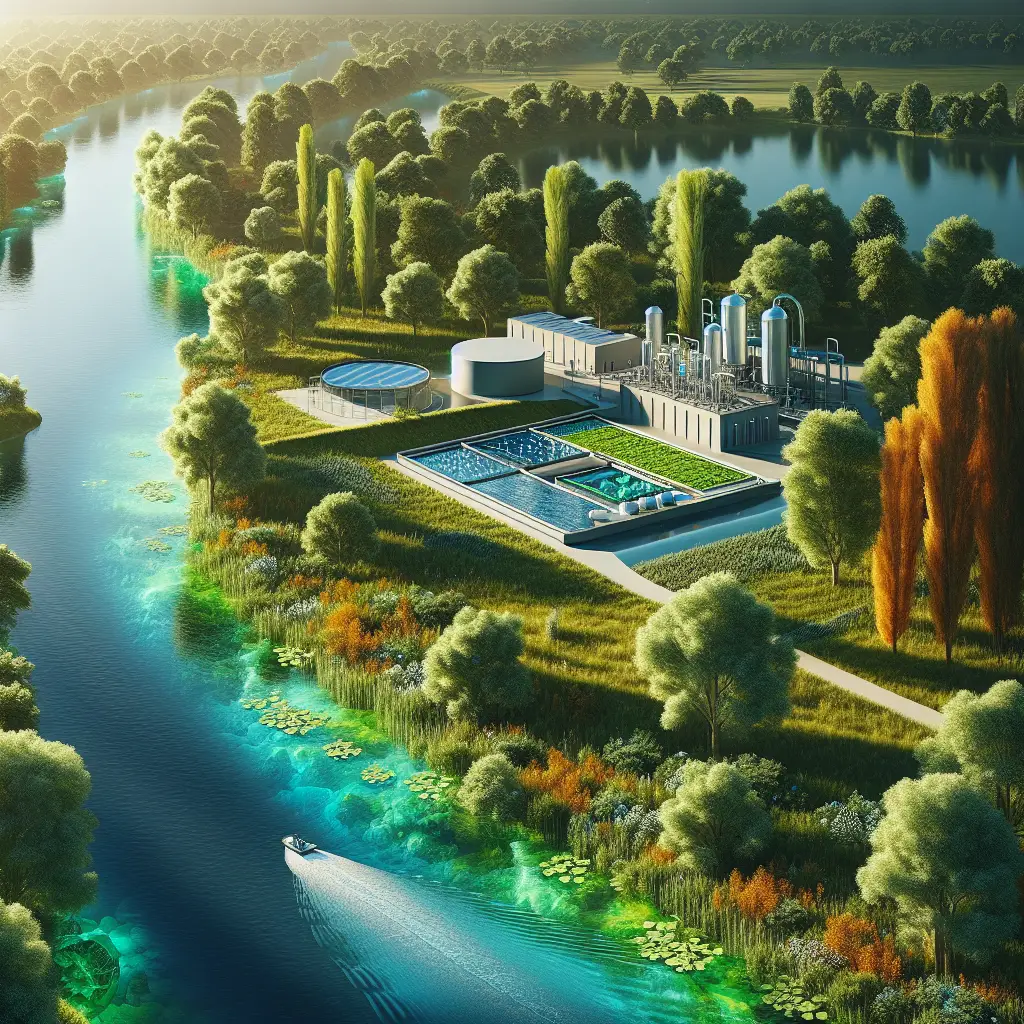Revitalizing Rivers : Cleaning the Rivers: Role of Water Treatment Plants Before Releasing Dirty Water into Rivers
Rivers serve as vital lifelines supporting diverse ecosystems, providing potable water, and sustaining agriculture and industries. With growing industrialization and urban expansion, however, rivers are being increasingly polluted by unsafe effluent discharge. Solutions are urgently needed to combat this issue, with water treatment plants playing a crucial role before dirty water is released into rivers.
Understanding the Problem: River Pollution
River pollution is a complex issue involving various pollutants such as chemicals, heavy metals, plastic waste, and biological contaminants. These pollutants derive from:
- Industrial waste: Often containing harmful chemicals and toxins.
- Sewage and wastewater: Includes human and animal waste, food scraps, and detergents.
- Agricultural runoff: Fertilizers, pesticides, and manure.
The impacts of river pollution are far-reaching, affecting human health, aquatic life, and the environment. Contaminated rivers contribute to waterborne diseases, destroy habitats, and lead to biodiversity loss.
What Are Water Treatment Plants?
Water treatment plants are facilities designed to clean and purify water, removing contaminants and pollutants. Their primary purpose is to ensure that when wastewater is released into natural water bodies, it meets environmental standards and poses no threat to human health or ecosystems.
Key Processes in Water Treatment
Water treatment involves several key processes to remove contaminants:
- Screening: Removes large objects like plastics and other debris.
- Primary treatment: Sedimentation tanks settle out solid waste.
- Secondary treatment: Microbial processes break down organic waste.
- Tertiary treatment: Advanced filtration systems remove remaining impurities and disinfect the water.
Technologies Used in Water Treatment
Modern water treatment plants employ an array of technologies to achieve efficient purification:
- Membrane Filtration: Removes small particles and microorganisms!
- Activated Sludge Systems: Uses bacteria to decompose organic material.
- UV Disinfection: Utilizes ultraviolet light to eliminate pathogens.
- Reverse Osmosis: Separates contaminants from water using a semipermeable membrane.
The Critical Role of Water Treatment Plants in River Protection
Water treatment plants play an indispensable role in minimizing river pollution by ensuring that the water being released meets stringent environmental guidelines. Key benefits include:
- Reduction of Pollutants: Significantly lowers the levels of harmful substances, preventing them from entering natural water bodies.
- Improved Public Health: Minimizes the risk of waterborne diseases to communities consuming river water.
- Protection of Aquatic Life: Maintains ecosystems by supporting a healthy aquatic environment.
- Compliance with Regulations: Helps industries and municipalities meet legal standards and avoid penalties.
Challenges Facing Water Treatment Plants
Despite their benefits, water treatment plants face numerous challenges including:
- High Costs: Installation and maintenance of sophisticated treatment systems can be expensive.
- Inadequate Infrastructure: Many regions lack access to modern treatment facilities.
- Technological Barriers: Rapid advancement in industrial pollutants often outpaces existing treatment technologies.
- Waste Management: Proper disposal of sludge and by-products from treatment processes is necessary.
Steps to Enhance the Impact of Water Treatment Plants
To bolster the efficacy of water treatment plants, several strategies can be employed:
Greater Investment
Investment in advanced technologies and infrastructure is paramount to expanding and modernizing water treatment facilities.
Public Awareness and Engagement
Education and community involvement can lead to more responsible waste disposal behaviors and support regulatory compliance efforts.
Innovative Solutions
Research into innovative techniques like biofiltration and phytoremediation can present sustainable options for future water treatment.
Collaboration Among Stakeholders
Governments, industries, and environmental organizations must work collaboratively to tackle the complexity of river pollution and water treatment issues effectively.
Conclusion
Rivers are invaluable resources that require protection from the growing threat of pollution. Water treatment plants are on the frontline in this battle, transforming polluted water into a cleaner resource safe for release back into natural water bodies. By investing in technology, fostering community awareness, and fostering collaboration across sectors, society can ensure that rivers remain vibrant and healthy ecosystems. The role of water treatment plants is not just essential but pivotal in this global endeavor.










